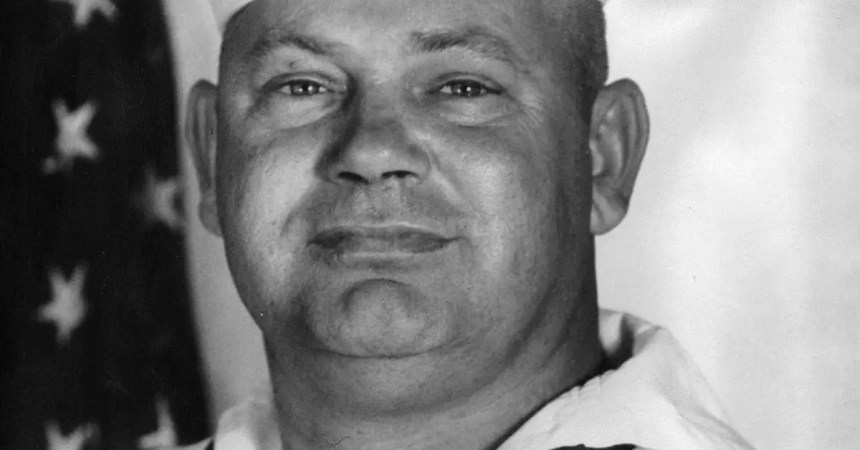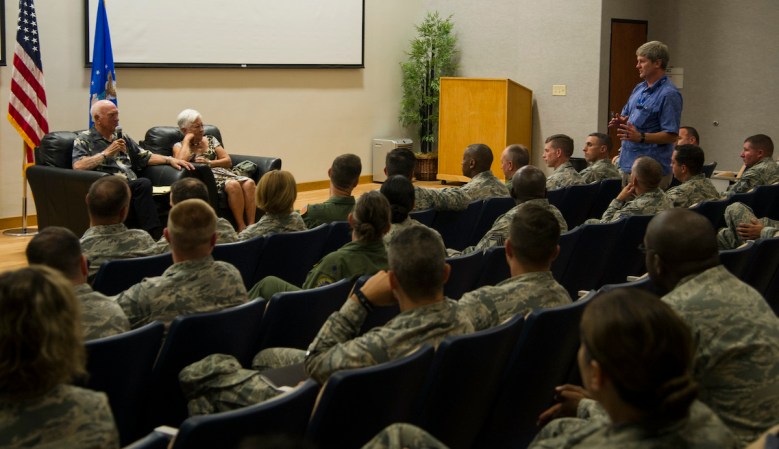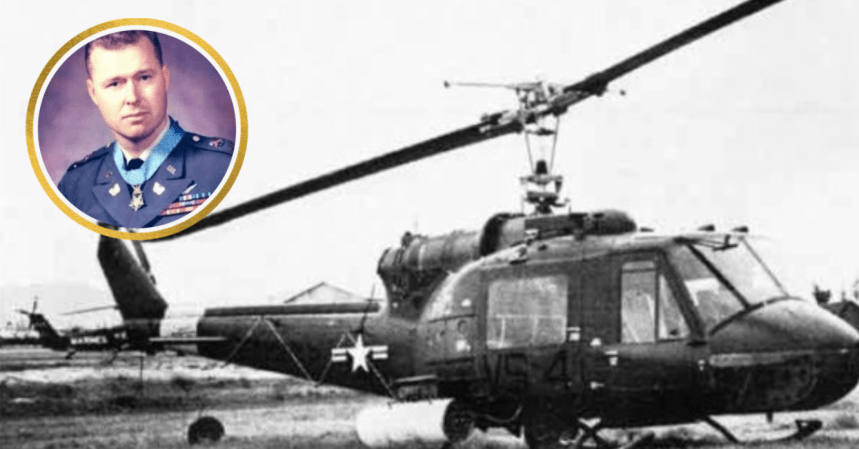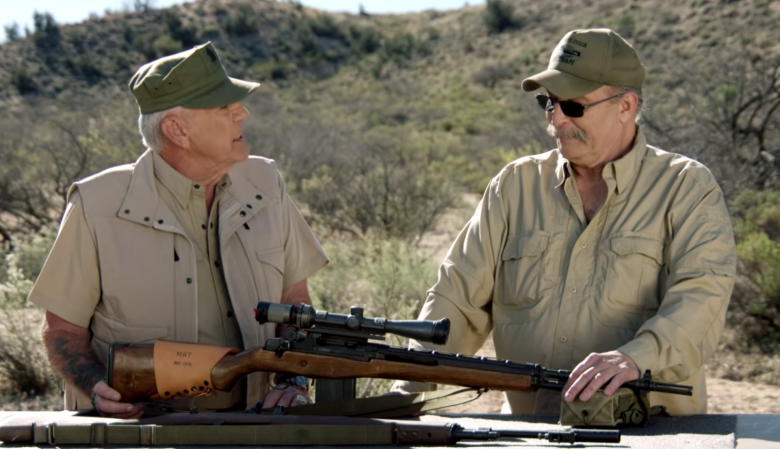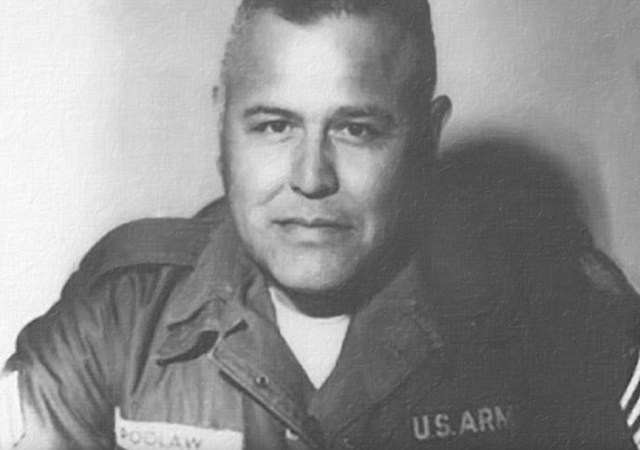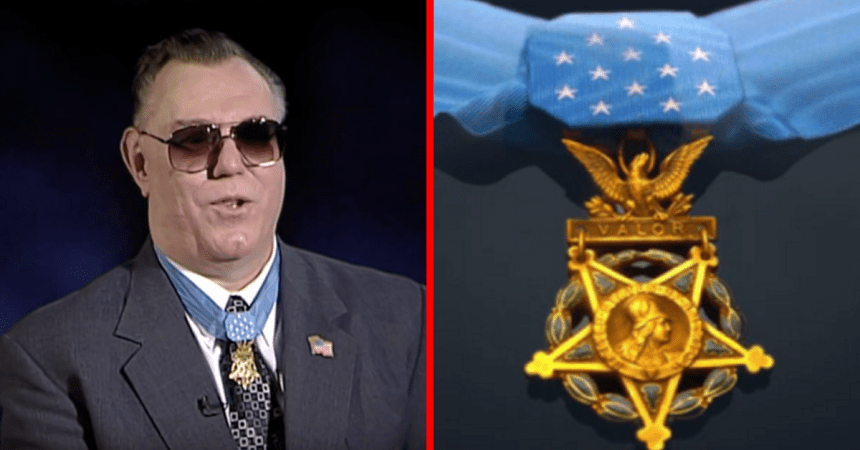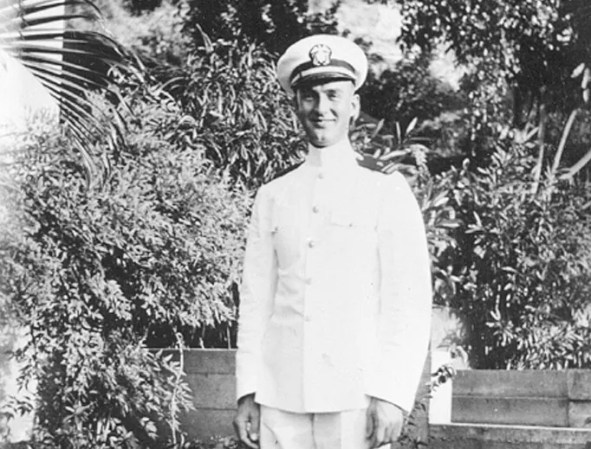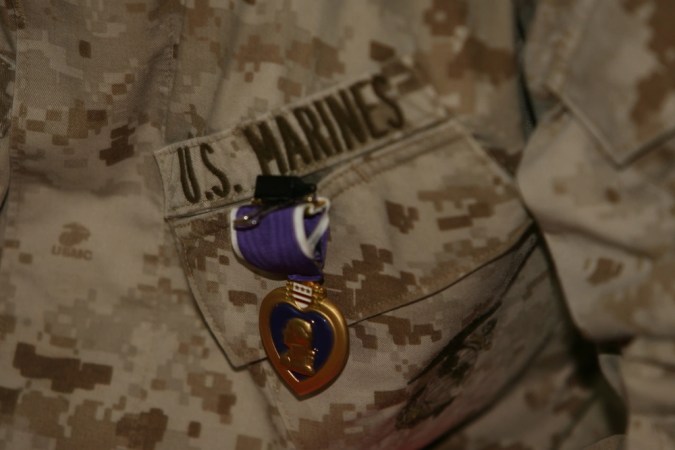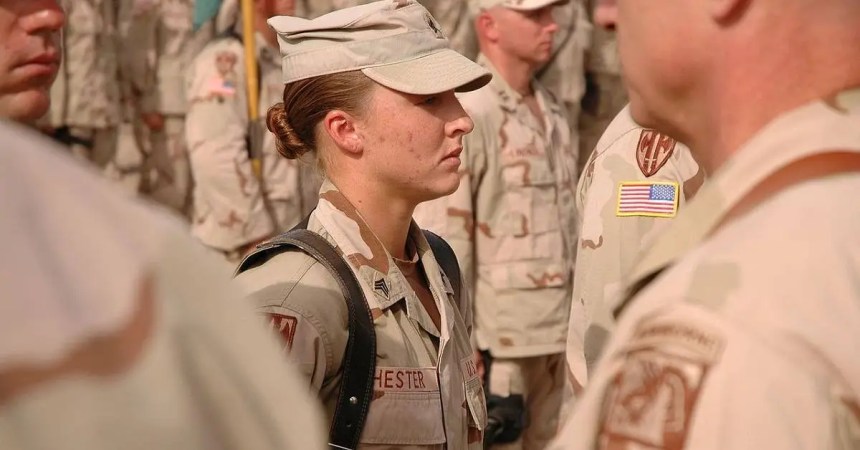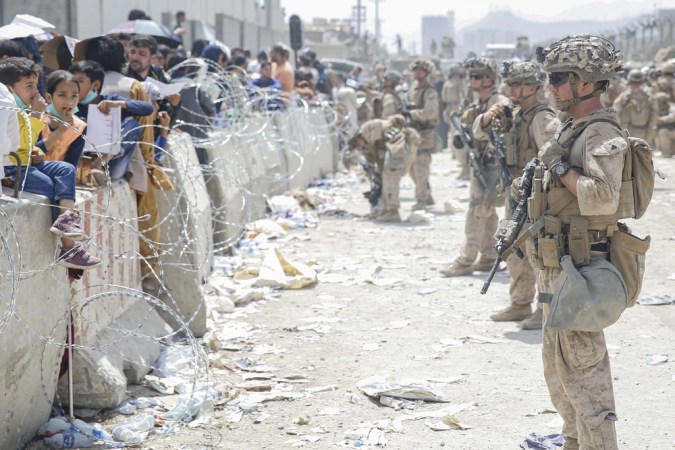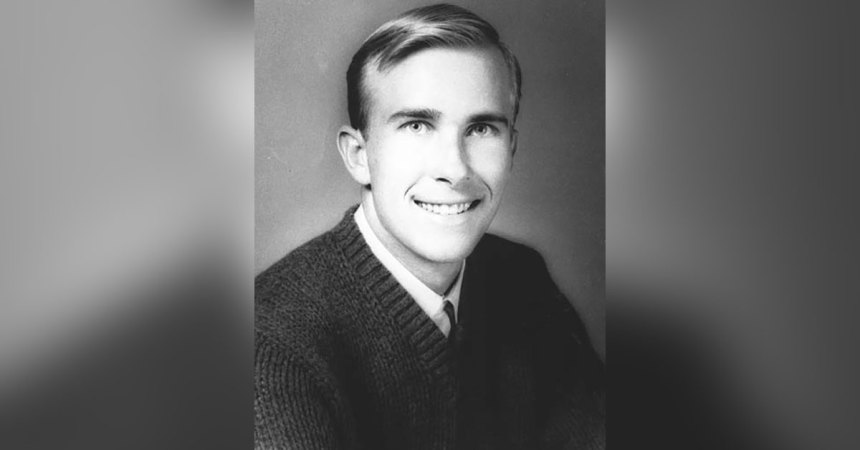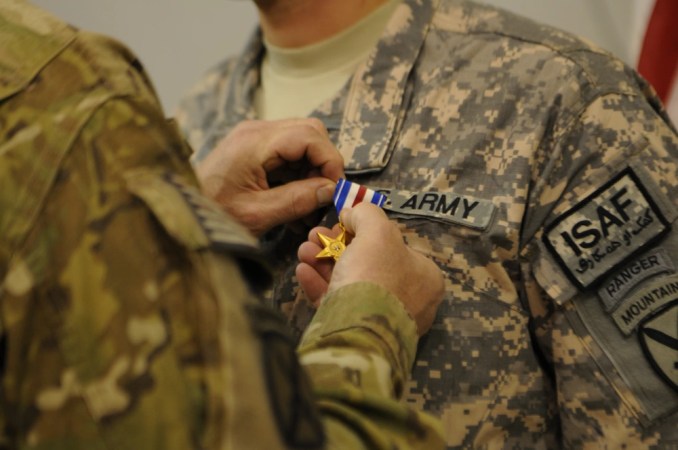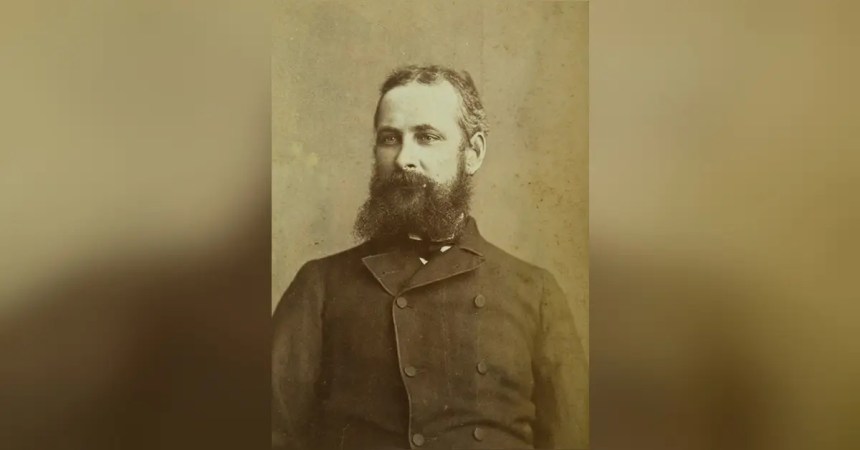When Boatswain’s Mate First Class James E. Williams finally allowed the Navy to retire him after nearly twenty years of service, he was the proud holder of the Navy’s top seven awards for valor as well as three Purple Hearts and a number of other accolades.
Nearly all of those awards, which ranged from multiple Bronze Stars with “V” devices to the Medal of Honor, were earned in a less than seven-month period.

(U.S. Navy)
So, how did a young Cherokee boy grow to become one of the U.S. military’s greatest heroes? Well, first, in 1947, he convinced a county clerk to falsify a birth certificate so he could join at the age of 16. His first tour was uneventful, an experience he hated at the time, but learned from, according to a 1998 interview in All Hands Magazine.
“I’d joined the Navy to see the world — and doggonit, I wasn’t moving. I’d got orders to an [landing ship, tank] that just sat around a buoy in the San Diego harbor.”

(U.S. Navy)
But a senior sailor gave him some perspective.
“An old chief told me, ‘Son, you got to learn to take orders, even if you disagree with them. That’s the first step to being a good Sailor and a good leader. If you can’t take orders now, you certainly won’t be respected when you give them later.’ Well, I got the message,” said Williams. “Learning discipline was the springboard that helped my Navy career. From then on, I had the sharpest damn knife and the shiniest shoes in the Navy. That’s what I was taught.”
And that sharp knife would come in handy.
Williams got his first taste of small craft and riverine warfare in Korea, where he was sent on raiding parties against small crafts near the shore.
It was this experience and his years of shining shoes and sharpening knives that led to Williams’ proudest day.
“The proudest day of my life had nothing to do with medals, ribbons, citations,” he told All Hands Magazine. “It was when they made me a patrol officer. That position was held only by chiefs and officers. It showed the trust the Navy had placed in me. I always wanted the opportunity to show what I could do. This Vietnam thing was it for me. The Navy gave me the chance to do my job.”
His job would be to take Patrol Boat, River-105 into the small, Viet-Cong-filled rivers of Vietnam.

(U.S. Navy)
The crew went out with Williams starting in May, 1966, and the fighting started early. While many of the patrols were quick forays into the river traffic to look for contraband, Williams and his crew saw major combat multiple times before the end of July.
On July 1, Williams and PBR 105 spotted an enemy sampan in the early morning darkness and gave chase. The sampan made for a friendly landing and Williams and his crew quickly came under fire from both the ship and shore. Maneuvering deftly, the men killed five enemies on the boat, captured the vessel and a few ship’s occupants, which were of “significant intelligence value.” He was later awarded the Bronze Star for his actions.
Just 22 days later, PBR-105 once again chased down an enemy sampan, this time at night. Again, they came under fire from enemies on shore but continued to fight. The crew killed six occupants of the boat, one enemy who had made it ashore, and captured the enemy sampan with its cargo and documents intact — again, these were of significant intelligence value. He would later be awarded a Bronze Star for his actions.
Less than a month later, Williams was leading PBR-105 and PBR-101 through the Mekong River in the early evening when they came under fire multiple times from a suspected 100-enemy-gun emplacements on both shores. They stayed in the kill zone, maneuvering and destroying multiple emplacements.
The men intercepted a sampan with two high-ranking Viet-Cong, but Williams was wounded in the face while salvaging documents from it. He kept up his men’s fire and captured 71 classified and sensitive documents before withdrawing. He would later be awarded the Silver Star.

(U.S. Navy)
His greatest heroism under fire came two months later in October, 1966, when PBR-105 and another boat went on what Williams thought would be a routine patrol.
“October 31, 1966, was supposed to be a restful day in the steamy heartland of the Viet Cong,” he said. “But it’s one of those times I won’t never forget, no matter how hard I try. We were on a day patrol, kind of like the ‘relax and recreation’ patrol — nothin’ too heavy.”
But, early in the patrol, the forward machine gunner yelled that he saw two motorized sampans. The motorized boats nearly always carried high-ranking Viet Cong. The Americans gave chase.
The boats attempted to scatter, forcing Williams to choose which to follow, but the Americans quickly killed one and began tracking down the other. The second sampan used the little time it had gained to turn down a shallow canal where the patrol boats couldn’t go.
Williams checked his map. The enemy’s most likely course of action was to follow the canal to its other end, a third of a mile away. He ordered his boats to intercept. Things immediately went sideways.
“We wanted to get them real bad,” he said. “I went around that corner at max sped to cut him off — and, lo and behold, I looked up and didn’t see nothing but boats and people and more boats and more people.”

(U.S. Army Center of Military History)
Williams and his boats had run straight into a massive enemy staging area. Suddenly, they found themselves surrounded by multiple companies of Viet Cong fighters. Williams, at the helm, immediately maxed out his engines and used his wake to disrupt the first sampan’s aim, then took off through the gauntlet.
Surprisingly, they made it. Williams later said that it seemed like the sampans were hitting each other more than him as the patrol boats made their mad dash through. Unfortunately for the Americans, they turned with the river only to have their luck worsen.
Their attempted escape landed them in another enemy staging area. Williams decided that the only way to save his shipmates was to fight it out with the Viet Cong, and they did. For over three hours, the patrol boats maneuvered at high speeds and provided fire for one another, cutting down enemy boats and shore positions as fast as they could in a desperate attempt to keep each other alive.
And it worked. The two boats and 10 Americans who went into the river all came back after inflicting a suspected 1,200 enemy casualties and destroying 65 boats. Williams would later be awarded the Medal of Honor for his actions that day, but he still wasn’t done in Vietnam.
Less than three months later, Williams was on a patrol when he saw a dredge strike a mine on Jan. 9, 1967. PBR-105 immediately gave aid and was picking up survivors when the crew heard a tapping coming from inside the hull. Williams jumped into the water.
During repeated dives, he directed the elderly man trapped inside to a nearby hatch, loosened two heavy pipes blocking the hatch, and then ran a line from a nearby tug around the pipes so they could be pulled free. Once the obstruction was removed, Williams and a crew member swam into the still-sinking dredge and pulled the man free, saving his life. He would later receive the Navy and Marine Corps Medal.

(U.S. Navy)
On January 15, less than a week later, Williams was leading a patrol on the Mekong when the crew spotted a large enemy supply movement across one of the river branches. The boat moved to intercept but quickly came under heavy fire from fortified positions on the river banks.
The boat dropped back and called in Vietnamese artillery and U.S. air strikes to reduce the enemy positions, and then forayed back into the river branch. Once again, heavy fire came at them from the shore.
This time, the Americans stayed in the thick of it and took aim at enemy sampans the Vietnamese seemed eager to protect. The PBRs destroyed them before withdrawing. Williams was injured during the withdrawal, but continued to direct the movement and the PBRs’ fire.
The enemy force that the patrol had encountered was later assessed as three heavy weapons companies with 400 men. The patrol was credited with killing sixteen enemies and wounding 20 while destroying nine enemy watercraft, seven structures, and 2,400 pounds of rice. Williams would later receive the Navy Cross for his actions.
Finally, Williams let the Navy send him home to a very well-earned retirement at just under the standard 20 years. He received his Medal of Honor from President Lyndon B. Johnson and entered a quiet nursing home to raise petun….
No. Of course not. He took his retirement and his Medal of Honor and became a U.S. Marshal, serving his country once again. This time, in South Carolina, Georgia, and Washington D.C.
He died on October 13, 1999, the Navy’s 224th birthday. According to The United States Navy Memorial, an unidentified, retired admiral spoke at Williams’ funeral and said,
“Willie did not seek awards. He did not covet getting them. We did not seek to make him a hero. The circumstances of time and place and the enemy’s presence did that. I know through personal investigation of each incident that he never placed his crew nor his patrol boats in danger without first ensuring the risk was calculated and that surprise was on his side. He always had the presence of mind not to endanger friendly villages. He inspired us all, junior and senior alike. It was my greatest honor to have served with the man who truly led us all with his example of unselfish devotion to duty.”
The Aegis destroyer DDG 95, christened in 2003, was named in his honor. Over the course of his career, he received the following awards for his service:
- The Navy Cross Silver Star (with one gold award star)
- The Legion of Merit (with valor device)
- The Navy and Marine Corps Medal with gold star Bronze Star Medal with two gold stars
- Vietnam Cross of Gallantry with Gold Star and Palm
- Navy Commendation Medal
- Navy and Marine Corps Presidential Unit Citation with one service star
- Purple Heart with two gold stars
- Vietnam Service Medal with bronze service star
- Republic of Vietnam Campaign Medal
- National Defense Service Medal with bronze service star
- United Nations Service Medal
- Korean Service Medal with two bronze service stars
- Korean Presidential Unit Citation
- Korean War Service Medal
- The Navy Good Conduct Medal with four bronze service stars



